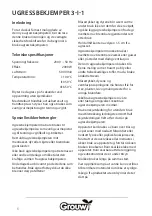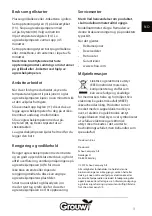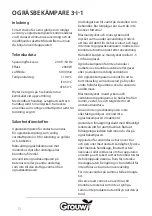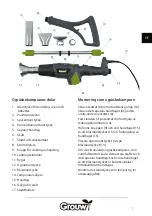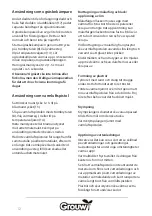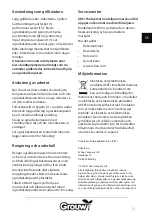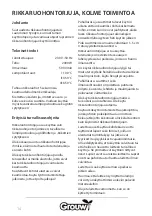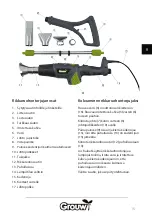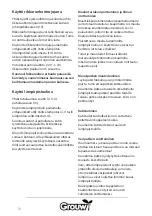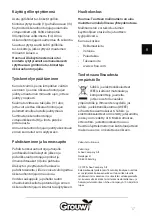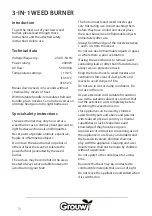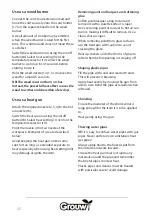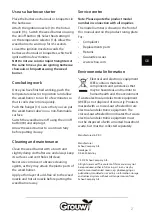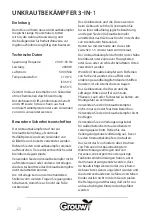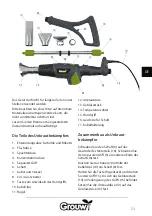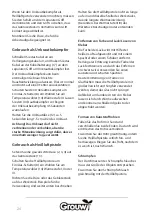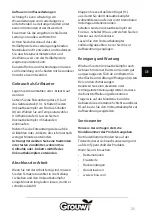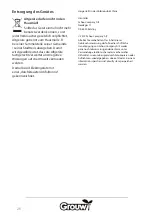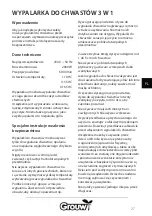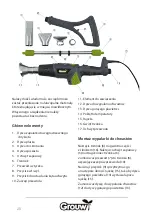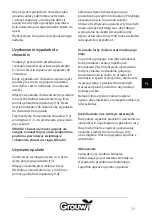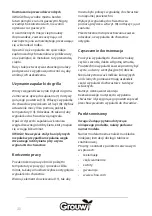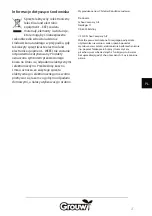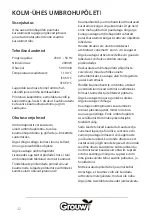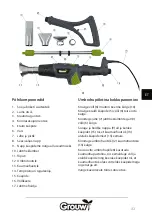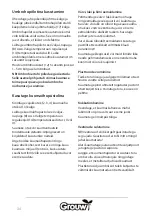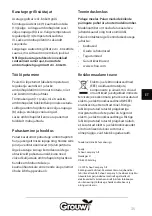
20
Use as a weed burner
Connect the cord to an extension lead and
hook the cord securely onto the cord holder
(17) on the separate handle on the weed
burner.
A small amount of smoke may be emitted
when the weed burner is used for the � rst
time. This is normal and does not mean there
is a defect.
Switch the weed burner on using the on/off
button (8). Select heat setting III on the
temperature selector (14). Allow the weed
burner to warm up for 45 seconds before
starting to use it.
Hold the weed nozzle (12) 1-5 cm above the
weed for around 5 seconds.
NB! The weed must not burn or char.
Instead, the powerful heat eff ect causes the
weed to wither and die within a few days.
Use as a heat gun
Attach the required nozzle (2, 3, 4) to the hot
air nozzle (13).
Switch the heat gun on using the on/off
button (8). Select heat setting I, II or III on the
temperature selector (14).
Point the nozzle or hot air nozzle at the
workpiece. Examples of use are described
below.
Avoid keeping the heat gun on the same
spot for too long, as extended exposure to
heat (especially when using heat setting II/III)
may damage or ignite the item.
Removing paint and lacquer, and softening
glue
Soften paint/lacquer using hot air and
remove it with a palette knife or scraper.
Over-exposing paint or lacquer to hot air can
burn it, making it diffi cult to remove. Use a
clean, sharp scraper.
When removing paint from glass surfaces,
use the heat gun with caution to avoid
cracking the glass!
Heat up stickers and other forms of glue to
soften them before peeling or scraping off .
Shaping plastic pipes
Fill the pipe with sand and seal both ends.
This will prevent it breaking.
Apply heat evenly by moving the gun from
side to side. Bend the pipe as required when
softened.
Shrinking
Ensure the diameter of the shrink collar is
large enough for the item it is to be applied
to.
Heat gently using the gun.
Thawing water pipes
NB! It is easy to confuse water pipes with gas
pipes. Never under any circumstances heat
gas pipes!
Always apply heat to the frozen spot from
the outside and work inwards.
Ensure the heat gun does not ignite any
materials around the pipe and remember
that metal pipes conduct heat.
Plastic pipes and sleeves must be heated
with particular care to avoid damage.

